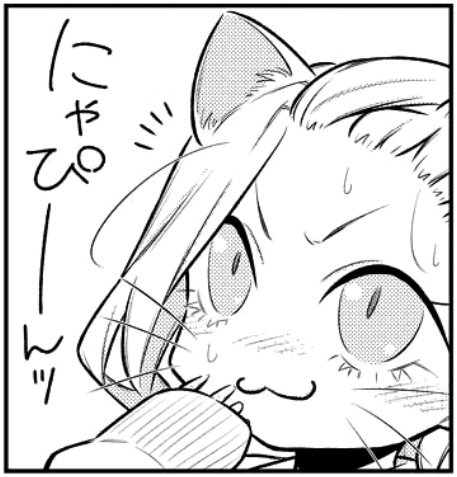Last year, Americans bought half a billion packets of Shin Ramyun, the spicy, beefy Korean instant noodle. The bold red-and-black packaging feels inescapable: It’s a staple of college dorm rooms, bodegas, middle-of-the-country Walmarts and viral TikTok videos.
But 30 years ago, the noodles were largely unknown in the United States. No grocery store would stock them, said Kevin Chang, the director of marketing for Nongshim, Shin Ramyun’s parent company. Except, that is, for a few small Korean grocers, including a fledgling shop in Woodside, Queens, called H Mart.
In the 1970s and ’80s, as Asian immigration to the United States soared, grocers like H Mart; Patel Brothers, an Indian grocery founded in Chicago; and 99 Ranch Market, originally focused on foods from China and Taiwan, started in Westminster, Calif., opened to meet the demand for ingredients that tasted like home. These were tiny mom-and-pop shops in suburban strip malls or outer boroughs with large Asian immigrant populations. They weren’t fancy, but they were vital to their communities.
Now, those same shops have transformed into sleekly designed chains with in-store roti machines, mobile ordering apps and locations across the country — all aiming to serve the fastest growing ethnic group in the United States and the millions of others who now crave flavors like Shin Ramyun, chili crisp, chaat masala and chai.
The H Mart of today is a $2 billion company with 96 stores and a namesake book (the best-selling memoir “Crying in H Mart,” by the musician Michelle Zauner). Last month, the chain purchased an entire shopping center in San Francisco for $37 million. Patel Brothers has 52 locations in 20 states, with six more stores planned in the next two years. 99 Ranch opened four new branches just last year, bringing its reach to 62 stores in 11 states. Weee!, an online Asian food store, is valued at $4.1 billion.
Asian grocery stores are no longer niche businesses: They are a cultural phenomenon.
No, please keep calling it Asian grocery store! The distinction helps me and others like me know that the store will have cultural or regional specialties that can’t be found in white people stores.
It’s also why La Superior is also a thing for Hispanic specialties. I like having to go to Seafood City for veg and La Superior for spices because their buyers know what makes their selection big unique and a good value.
Please don’t bleach and iron the social fabric to remove everything that is “different”. Homogeny destroys history.
Is seafood City a chain or do we have the same market? The amount of veggies and meat I can’t get anywhere else always makes the trip worth it. I also like taking a gamble and trying different snacks. Dried squid is the best. And yes I don’t believe calling it the Asian market is wrong.
Seafood City is a chain. I used to go to 99 Ranch exclusively but Seafood City has ube and fresh lychee, so it’s become a regular stop.
Is it La or El superior? I have superiors near me but now I’m wondering if there’s another different superior I’ve been missing out on.
Weird to see H Mart getting national attention. When I was growing up, it was definitely a regional thing. I recommend it if you ever get a chance to go.
I love H Mart, but fair warning, anything you can find at Target or a regular grocery store is probably overpriced at H Mart. One of the hot sauces I like was 50% more there, my mom got apples and they were like 3x the price of the same ones at Target, and so on. I only buy the specialty stuff I can’t get anywhere else now.
True, it’s an expensive place. I have never shopped for staples there, just the fun stuff you can’t get elsewhere.
Not sure if they all have food courts but that’s a highlight too
The one by me is suuuper cramped, so no full food court, but they do have a little cafe area. I’ve never eaten there because I’m vegan and the menu is not, but I look sadly at it every time I pass it because Korean is one of my favorite cuisines.
Yup, I go for the items that I can only find there, but the rest of the regular stuff I just get from my local grocery store. Other than that, it’s the foodcourt I really go to.
That’s funny. I’ve had the opposite experience. I would buy El Yucateco by the armful from there. They frequently go on sale for $2.49/bottle. I moved a couple years ago, so that may not be the case anymore.
When the H Mart in Burlington, MA opened up (I think 2010?) it was such a big deal; they had police directing traffic around it for the first few months 😅
I had no idea H Mart was national, I just assumed it was another local Asian grocery. We have a BUNCH of them here.
Fubonn is fascinating:
https://www.oregonmetro.gov/news/my-place-profile-michael-liu
https://www.onlyinyourstate.com/oregon/coolest-place-to-shop-or/
Hadn’t heard of H Mart until about 15 years ago when they opened one in the University District here.
During COVID lockdown, my work did remote ‘cook together’ team-building classes, led by a cook on Zoom. They would send out list of ingredients to buy ahead of time. Only a few managed to get ALL the ingredients, no matter how obscure.
They were all people who had a 99 Ranch near them. It turned into a running gag.
We’ve got korean places springing up around in my neck of the woods like weeds. Must have at least 5 or so korean bbq’s in easy driving distance. As a fan of soju and korean bbq I’m all about it. Boatload of other asian places too, even a korean corndog place which was great but felt more of a novelty to me then some place for a regular visit.
Whenever I know I’m going to be living in an area for a while, I check to see if there are any Asian markets are around. Gotta have my staples! So important for fruits and vegetables you wouldn’t otherwise find.
They’re not really a cultural phenomenon though. All cultures with immigration have this. In Iran they are called “Turkey shops” roughly translated. In Norway they are called Pakistani shops.
In the U.S., “Asian grocery” usually means food from East Asia and not South Asia. South Asian food (at least around here) is usually in places that call themselves Indian groceries. Yes, I realize that doesn’t actually make sense considering all the other countries in the area they also have food from.
If in southern Ohio or northern Kentucky, Jungle Jims has just about everything when it comes to international foods.
The H-Mart in Federal Way (south of Seattle) is about 2/3 Asian food aisles, 1/3 Hispanic food aisles. Of the handful of H-Marts I’ve been to it’s the only one like that.
That photo is just a shelf of sodium.
Americans - hurr Durr the British conquered the world for spices and don’t use them
Also Americans - holy shit spices other than butter and sugar
Fuckin hell guys are you only just discovering this stuff 😂
pretty big talk for a people that think curry is an Indian food and still use vinegar as a fried food condiment :P
And just for the record – Butter, nor sugar, are spices …
Also Americans - holy shit spices other than butter and sugar
Where exactly do you think the chili pepper and its spice derivatives came from?











